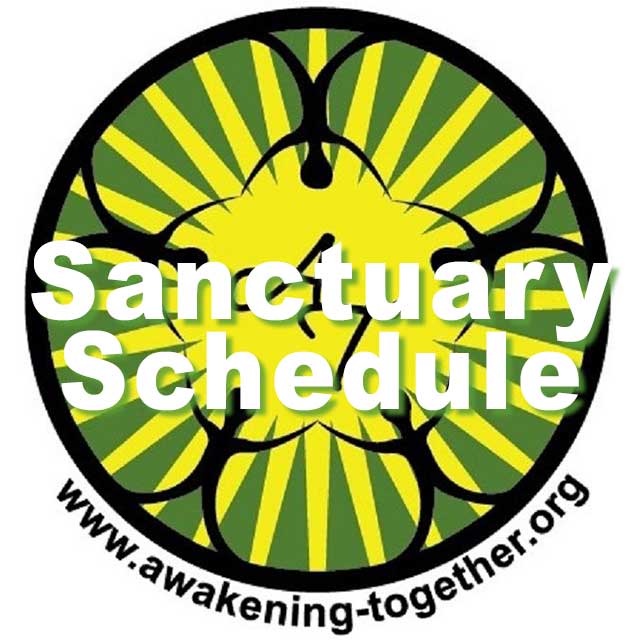Hi Everyone,
I decided to share these notes from my Week One Gentle Healing Journal because it may be helpful to some of you as you walk through the purification process. I will continue to share anything from my journal that I feel may be helpful. You can share from your journals in The Forum for your Gentle Healing Group, if you want to.
Note that I do not journal everyday at this point in the process. As we go deeper into the Year 1, I will journal everyday.
Love, Regina
Day 1
I just completed Lesson 1 for the morning. I noticed that the mind did not want to focus on the reading of Lesson 1. During the exercise it wanted to run ahead of the item I was on and pick the next item for the exercise. I also briefly noticed meanings that had been given to objects. I could see that the mind seeks identification with pretty nails, sore feet, cluttered tabletop, etc. I could also see that the purpose of these meaningless identifications is identification of awareness with thought. The meaningless identifications, whether they are positive or negative identifications, have the purpose of marrying awareness with thought as if ‘I am thought.’
Workbook Lesson 1 asks us to make no allowance for difference in the kinds of things to which today’s idea applies. As I see it, that is because there is only one purpose at work in every attached meaning, and that is identifying awareness with thought.
The instructions for Workbook Lesson 1 say that the exercise should not be ritualistic. The mind has the ability to repeat something, like a trained monkey repeating tricks. This could be called mindless mind. In mindless mind, awareness is distracted. For example, I can say, “That TV does not mean anything” while thinking about an email I need to write later today. This distraction is an ego preservation technique, because nothing is seen in the process. In other words, awareness has not become aware. When nothing is seen, nothing is healed.
The instructions also say “a comfortable sense of leisure is essential.” The comfortable sense of leisure is the peace that comes when awareness is fully present. With this “comfortable sense of leisure,” seeing happens.
In The Way of Mastery, Lesson 1, it was said, “I have done all this; I must undo it.” But it is important to note that it also said, “But I have no idea how I did this. Therefore, I must surrender to something else.”
The mind, which has the purpose of identifying awareness with thought, cannot be trusted to heal this misidentification. Something else must guide this healing process. That is intuitive wisdom, which comes from the part of awareness that is not identified with thought. Intuitive wisdom is much more subtle than thought, but it is very clear in its wisdom.
(From this point forward, I will use the term “attention” to refer to the part of awareness that is identified with thought and the term “clear awareness” to refer to the part of awareness that is not identified with thought.)
NTI Luke, Chapter 12 says, “What you are focused on, and have always been focused on, is thought. In every moment in your seeming interaction with the world, you are focused on thought.”
In the previous sentence, clear awareness is talking to attention. The “you” in the sentence is attention.
You, attention are focused on thought.
Clear awareness is pointing out the misidentification that has occurred.
Day 2
NTI teaches that everything we experience on the path of healing is either willingness or resistance. It equates willingness with joy and resistance with delay.
Willingness is the quality or state of being prepared to do something.
Joy is the emotion evoked by well-being.
The student of healing wants to learn the difference between the feeling of willingness/joy/well-being and the feeling of resistance.
Willingness could be said to be a feeling that might say (if it had a voice), “Okay. I see what is going on here. This is not comfortable, but I have decided to heal. Therefore, I am grateful for this healing opportunity, which is presenting itself now.” That attitude has readiness and well-being in it; therefore it is willingness/joy.
Resistance can be experienced in a variety of ways, but it does not have readiness or the sense of well-being in it. Some examples of resistance are believing you are guilty or unworthy, being worried, blaming another, getting defensive, being distrustful, fearing the future, resenting authority, stress and not wanting to do your spiritual practice.
NTI Luke, Chapter 12, recommends, “When resistance arises in your mind in any form, let it go immediately in gratitude as valueless.” This describes a method of returning to willingness.
A return to willingness may start with remembering that you want healing. That may be followed by remembering that in order for something to heal, it needs to be seen (brought into awareness). You can feel grateful that this has been brought into awareness so it can be healed. You can remember you have given this all the meaning it has for you, and then you can choose to rest from that meaning. Resting from meaning (resting from believing) gives clear awareness the opportunity to heal the misidentification of attention with thought. (It allows the old neural pathway to dry up and enables a new, healthier neural pathway to be drawn in the brain.)
Be aware that healing occurs through recognition (seeing) and resting. That is your job in healing. Clear awareness does the rest. (Clear awareness can be equated to the Holy Spirit.)
Rest, Accept and Trust (RAT) is a simple reminder of your job in the healing process.
- Rest the mind by withdrawing your attention/belief from obsessive thinking. If that is challenging, try positive healing-focused self-talk such as, “Ok, just breathe now. Take a deep breath. Now another. This is okay. This is coming up now because I have decided to heal. I want to heal. And in order to heal, things must come up. I am happy this is here, but I do not want to give it my attention. I want to rest attention away from this so it can be healed. I will focus attention on my breath. I trust healing is happening. I am happy for this opportunity.” Etcetera or something similar.
- Accept the feeling. Allow it to be. Realize that as this feeing comes into awareness and is seen, it is healing. Stay out of the way. Do not try to change anything. It is just a feeling, an emotional energy and nothing more. Let it be as it is. Be grateful that healing is mysteriously occurring.
- Trust that healing is occurring. You have done your part by resting and accepting. Clear awareness (God, Holy Spirit) is taking care of everything else. You have gotten out of the way so healing can happen. That is all you were asked to do.
Day 3
The brain is reprogrammed as attention’s misidentification with thought is healed. There are some things we can do to assist in the reprogramming of the brain.
- An open-heart increases efficacy. Examples of an open heart are:
- Have a positive spiritual aspiration or purpose. For example, one may want to see with the eyes of God or know Love as the only reality.Note: If your goal has a negative focus such as, “I want to stop suffering,” consider a positive focus that feels genuine and authentic for you. For example, you may want freedom, happiness or lightness. A positive goal is much more effective than a negative goal because attention is focused on the ideas stated in your goal. It is much better to have attention focused on the idea of freedom or lightness than it is to have attention focused on the idea of suffering.
- Maintain a sense of well-being. One way to maintain a sense of well-being when the crap is coming up is to remember that the thought-stream or emotion is coming into awareness because you want to heal. Remembering that healing is what you want is extremely helpful.
- Trust that healing is occurring.
- Repetition & practice with new programming. Examples of new programming include resting the mind, remembering the daily lesson, thinking about your spiritual aspiration, etc.
- Visualization. For example, imagine yourself resting the mind, imagine yourself remembering to do the workbook lessons, imagine yourself wanting awakening/truth more than anything else, etc. The brain cannot tell the difference between something real and something imagined. Research shows that anytime you are thinking (including imagining) you are engaged in conditioning neural pathways.
- Meditation. Meditation is concentrated rest away from mental activity. Therefore, it gives clear awareness ample time to heal the mind.
- Observe/watch old programming without feeding it. Be aware of it, but don’t believe it and don’t fight against it. As you observe old programming in action, watch with a sense of curiosity. Become familiar with your triggers. For example, you might watch old programming to discover what it feels like in your body just before an old neural pathway begins to fire. (e.g., What happens in me just before I scream at my daughter?)
- Discover how you can stay motivated to stick with gentle healing because you want to. Healing is an authentic journey for you when you are aware that you are on this journey because you want to be here.



